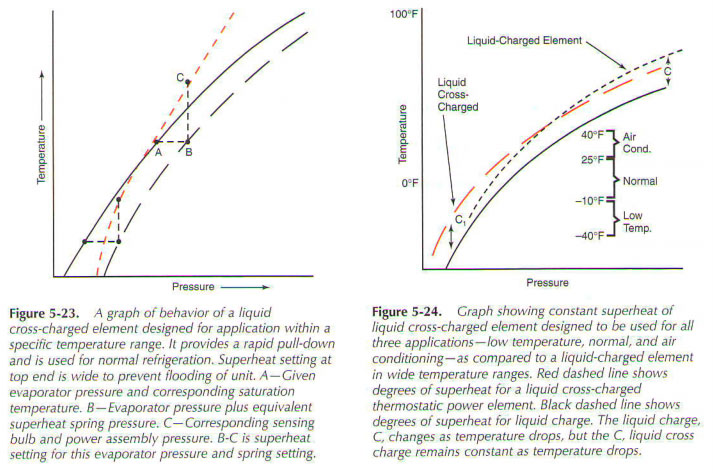Liquid Cross-Charged Sensitive Element
Liquid cross-charged sensing bulb uses liquid differs from the refrigerant in the system. Perhaps the use of mixtures of liquids to produce the required performance characteristics.
Liquid cross charged elements have a lot in common with liquid charged elements. Some of the liquid element is always present, regardless of temperature. Also the sensor element continues to control the vaive, even if the valve body temperature falls below this item.
The valve closes quickly when the compressor stops. This is because the pressure in the evaporator is growing faster than the sensing bulb pressure as evaporator warms. Load compressor is reduced when running. As the suction pressure is reduced, overheating is reduced, thus using the maximum surface of the evaporator.
Hunting is reduced due to the pressure of the temperature curve sensor element flatter. Valve more responsive to changes in the suction pressure than changes in the sensing bulb.
Liquid cross charged elements are designed for a temperature range from-40F (-40 C to 4.4C).
These valves are typically used in commercial low temperatures or at a very low temperature of the system.
Figure 5-23 shows the operational characteristics of the cross liquid charged element in the form of a graph. On Fig. 5-24 shows the difference in overheating of the curve cross charged element compared with a charged element.
 .. ..
|

 ..
..